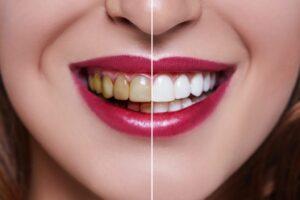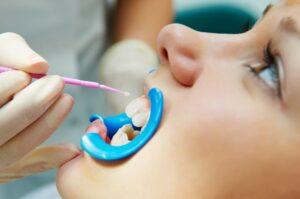Blog Highlights:
- Teeth stains are typically caused by the chromogens found in many foods and beverages
- Extrinsic stains can be removed with the help of whitening toothpastes that contain silica and cleansers
- Intrinsic stains are difficult to remove as they are caused by chromogens that have gone into the dentin
- Teeth whitening procedures will typically use either hydrogen peroxide or carbamide peroxide
A lot of people today want to have whiter teeth. This is because, over time, teeth can get discolorations due to the stains that are found in foods and beverages. For example, coffee, tea, and red wine, all have chromogens. Chromogens are molecules that are heavily pigmented, this is the main reason why these items are some of the leading causes of teeth discoloration.
Chromogens from your diet can easily stick to the teeth enamel and cause surface or extrinsic stains. This type of stain can be removed by tooth brushing especially when you use a toothpaste that contains mild abrasives. Whitening toothpaste can contain ingredients such as silica, and cleansers that can keep the exterior of your teeth white and shiny with continued use.
Another type of stain is the intrinsic stain. This occurs in the inner layer of your teeth called the dentin, which is more porous and which can easily get discolored. Intrinsic stains can be very difficult to remove. Also, the dentin can get darker as we age, making it another factor that causes teeth discoloration. To get rid of the intrinsic stain, you might need to use bleaching agents. Common tooth bleaches include hydrogen peroxide and carbamide peroxide.
Carbamide peroxide will turn into hydrogen peroxide when it comes into contact with your teeth. Hydrogen peroxide is an effective oxidizing bleaching agent that can act on the chromogens. It can help give your teeth a whiter color by breaking down the chromogens by diffusing it and by turning it into smaller molecules that are less visible. This is why these bleaching agents are recommended when it comes to fighting intrinsic stains.
Teeth whitening procedures can be done at the dentist’s office or at the comfort of your own home. You will still be using either hydrogen peroxide or carbamide peroxide, but depending on where you will get the procedure, you might be given different concentrations of the bleaching agent.
Dentists are trained to use higher concentrations of the bleaching agent, and in-office dental whitening procedures will take lesser time compared to those that are done at home. Both procedures, however, are safe and effective. When opting for the in-office procedure, the dentist will have to form-fit a tray that will help you get the best fit for your teeth’s unique shape, size, and position. Products for home use, on the other hand, will not be able to provide you with a custom-fitted tray. You can also use whitening strips which will utilize the same principles but without the need for a tray.
Some people will experience sensitivity after undergoing a teeth whitening procedure. This might have been caused by the peroxide getting into the dentin. In most cases, the sensitivity is temporary, and you can resume the procedure after the sensitivity has subsided. Teeth whitening can work on all adult teeth but it will not work on veneers, crowns, and fillings.
You should also know that some discolorations are not caused by chromogens, but by antibiotics, aging, and injury. This is why you need to consult with your dentist before going through any type of whitening procedure.








